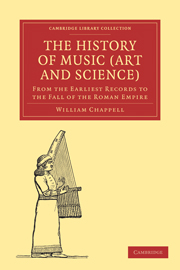Summary
The following is the popular mytha of the invention of the lyre by the Egyptian Hermes, or Thoth:—“The Nile, after having overflowed the whole country of Egypt, when it returned within its natural bounds, left on the shore a great number of dead animals, of various kinds, and, among the rest, a tortoise, the flesh of which being dried and wasted by the sun, nothing was left within the shell but nerves and cartilages, and these being braced and contracted by desiccation, were rendered sonorous. Hermes, in walking along the banks of the Nile, happening to strike his foot against the shell of this tortoise, was so pleased with the sound it produced, that it suggested to him the first idea of a lyre, which he afterwards constructed in the form of a tortoise, and strung it with the dried sinews of dead animals.”—(Burney&s History, i. 200.)
Diodorus Siculus says nothing about the Nile, but that, when the Egyptian Hermes invented the lyre, “he gave it three strings, in allusion to the three seasons of the Egyptian year; for these three strings producing three different sounds, the acute, the grave, and the mean, the acute sound answered to summer, the grave to the stormy, or wintry season, and the mean (μέσον) to spring [and autumn].”
- Type
- Chapter
- Information
- The History of Music (Art and Science)From the Earliest Records to the Fall of the Roman Empire, pp. 39 - 70Publisher: Cambridge University PressPrint publication year: 2009First published in: 1874



